
Composite resin materials have become indispensable in modern restorative dentistry due to their aesthetic qualities, durability, and versatility. However, selecting the appropriate shade of composite for each clinical case is crucial for achieving optimal aesthetic outcomes. While single shade composites have evolved to offer remarkable colour adaptation properties, multi/dual shade systems continue to provide versatility and precision in mimicking natural tooth colours. This article aims to provide dentists with practical guidance on when to use multi/dual composite shades versus single shade composites, along with important considerations to enhance decision-making in clinical practice.
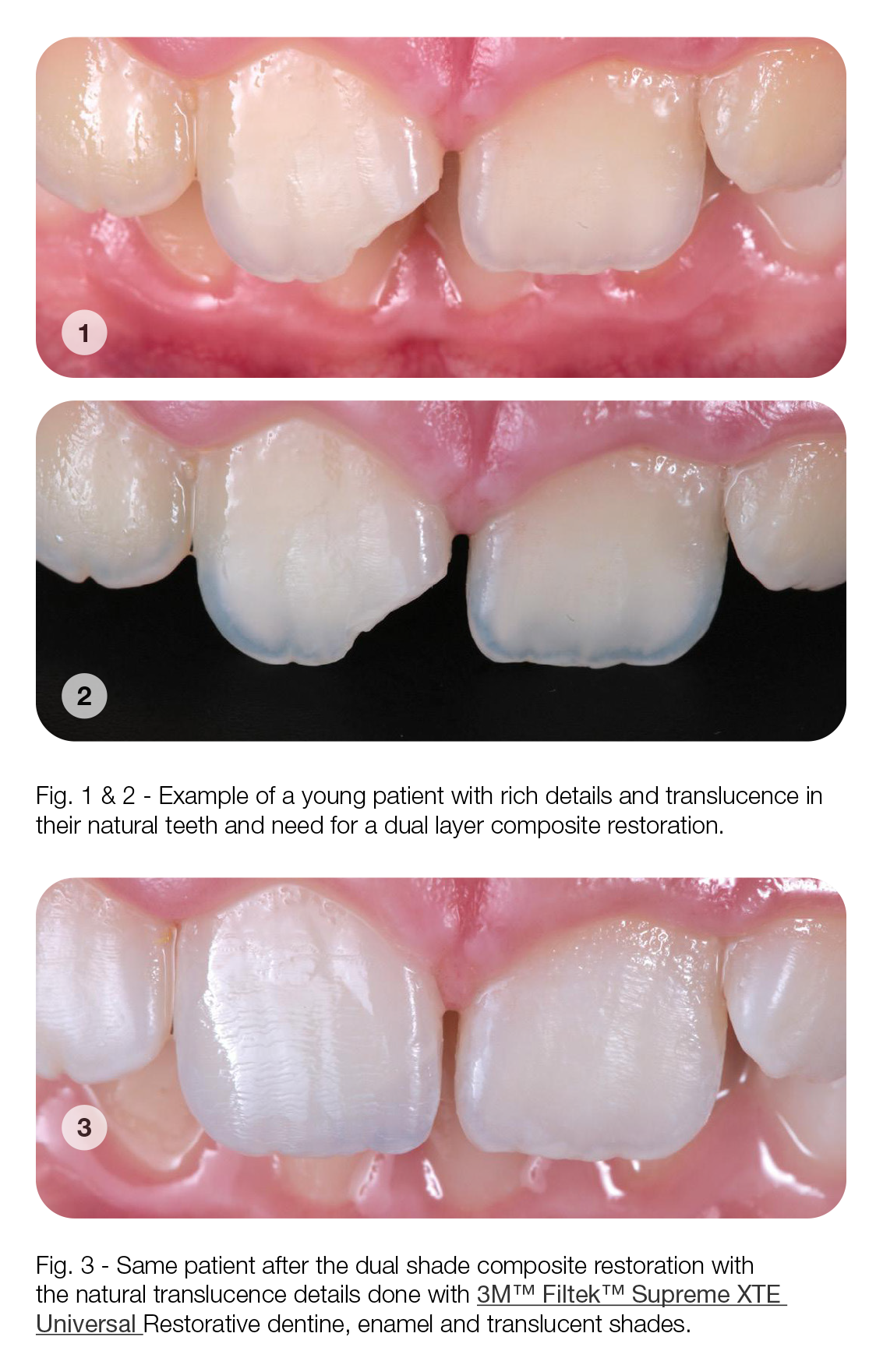
Understanding Composite Shade Selection
Composite shades are typically classified as single shade/ opacity or multi/dual shades/opacities. Single shade composites offer simplicity in application, as they provide a uniform colour throughout the restoration. Single shade composites have undergone significant advancements in recent years, owing to innovations in material technology and formulation. Today’s single shade composites boast enhanced colour adaptation properties, allowing for seamless blending with surrounding dentition. These materials exhibit improved opacity, translucency, and fluorescence, mimicking the optical characteristics of natural teeth with remarkable precision. On the other hand, multi/dual composite shades consist of two or more components designed to mimic the natural variations in tooth colour, providing a lifelike appearance.
Harnessing the Versatility of Multi/Dual Composite Shades
For young patients with rich details and translucence in their natural teeth, opting for multi/dual composite shades becomes more advantageous. Multi/dual composite shades excel in replicating the intricate nuances of natural tooth colour and opacities, making them indispensable in achieving precise colour matching and blending in anterior restorations and cases involving complex colour variations. Specifically, they are beneficial in cases requiring seamless transitions between different tooth structures like incisal edges, incisal translucence, dentine effects, and inter-proximal areas.
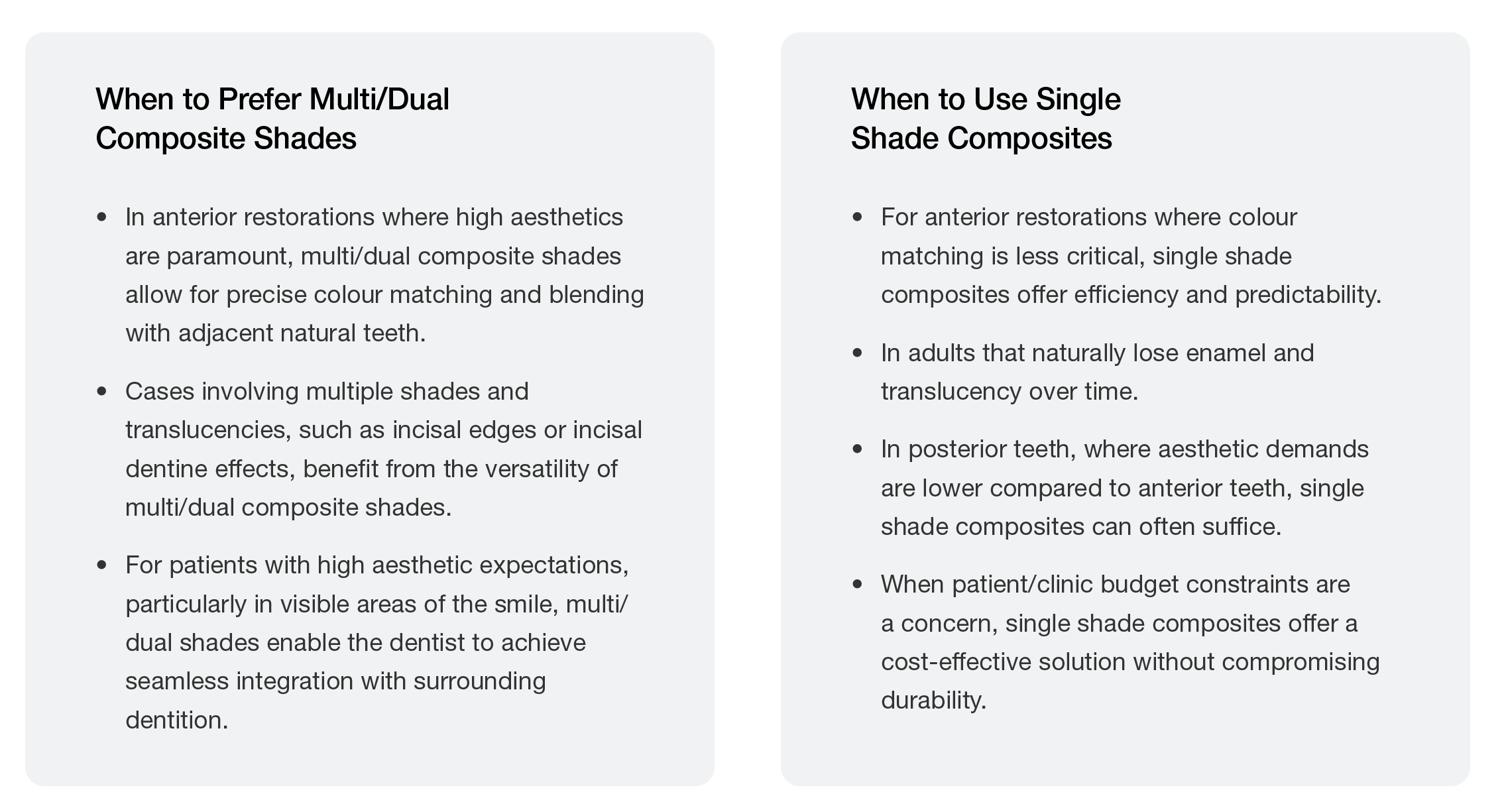
Embracing Single Shade Composites
While advancements in single shade composites have rendered them more efficient and predictable for certain cases, it’s important to underline that adults naturally lose enamel and translucency over time. This natural process makes single shade composites preferable for cases where colour matching is less critical, such as straightforward anterior restorations or in posterior teeth. These materials now feature improved colour stability, opacity, and fluorescence, enabling seamless integration with natural dentition. These materials offer simplicity in application and good aesthetic outcomes.
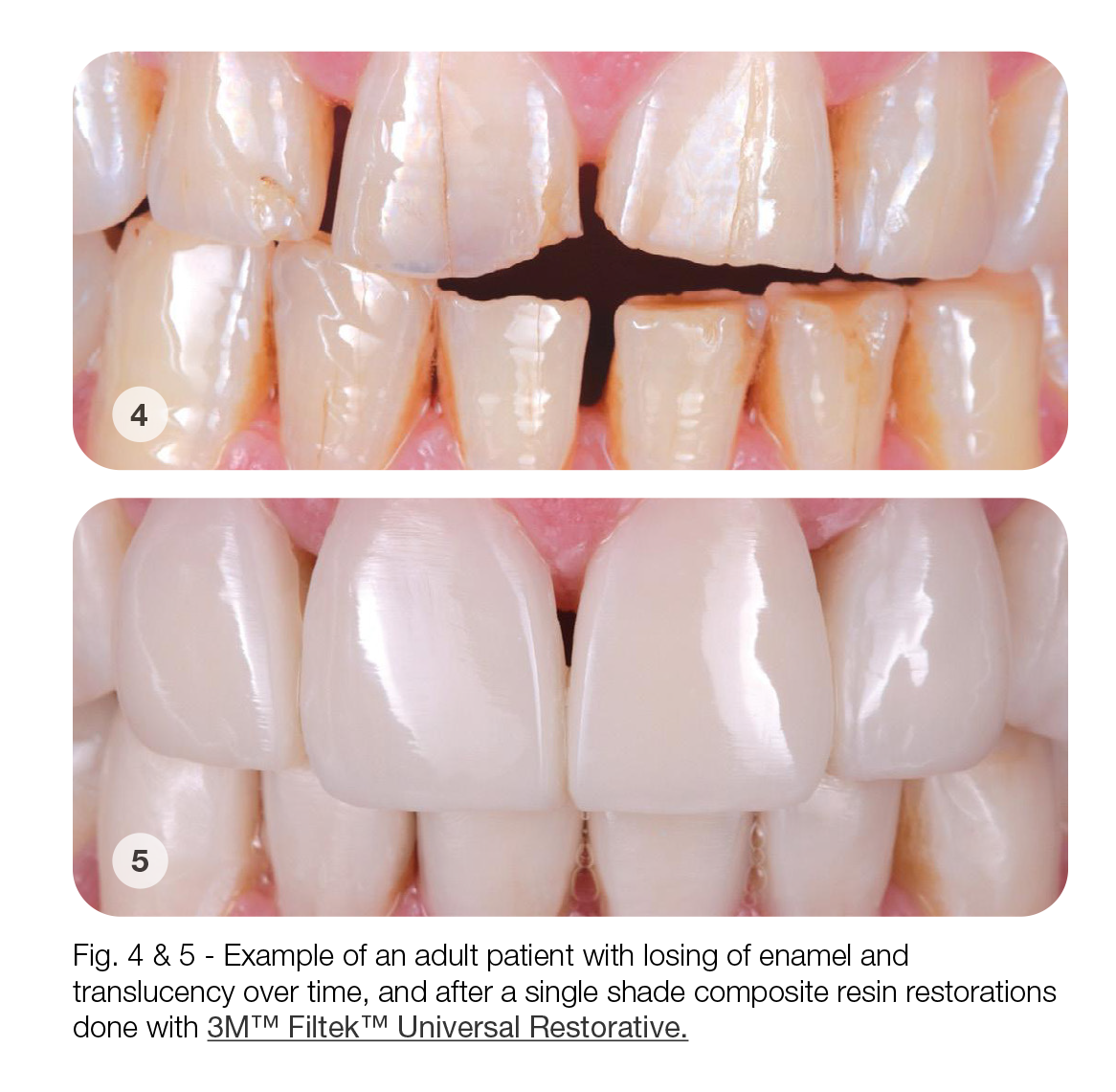
Key Considerations for Dentists
Dentists should carefully evaluate the aesthetic demands and complexity of each case to determine the most appropriate composite shade approach. Simple anterior restorations and posterior teeth may benefit from single shade composites, while complex anterior restorations and cases with extensive colour variations may necessitate multi/dual shade systems. Engaging patients in the shade selection process and understanding their aesthetic preferences are critical. Dentists should communicate the advantages and limitations of both single shade and multi/dual options, empowering patients to make informed decisions aligned with their goals.
Staying abreast of the latest advancements in composite technology and mastering shade matching techniques are essential for delivering superior clinical outcomes. Dentists should invest in ongoing education and hands-on training to refine their skills and enhance their proficiency in composite shade selection.
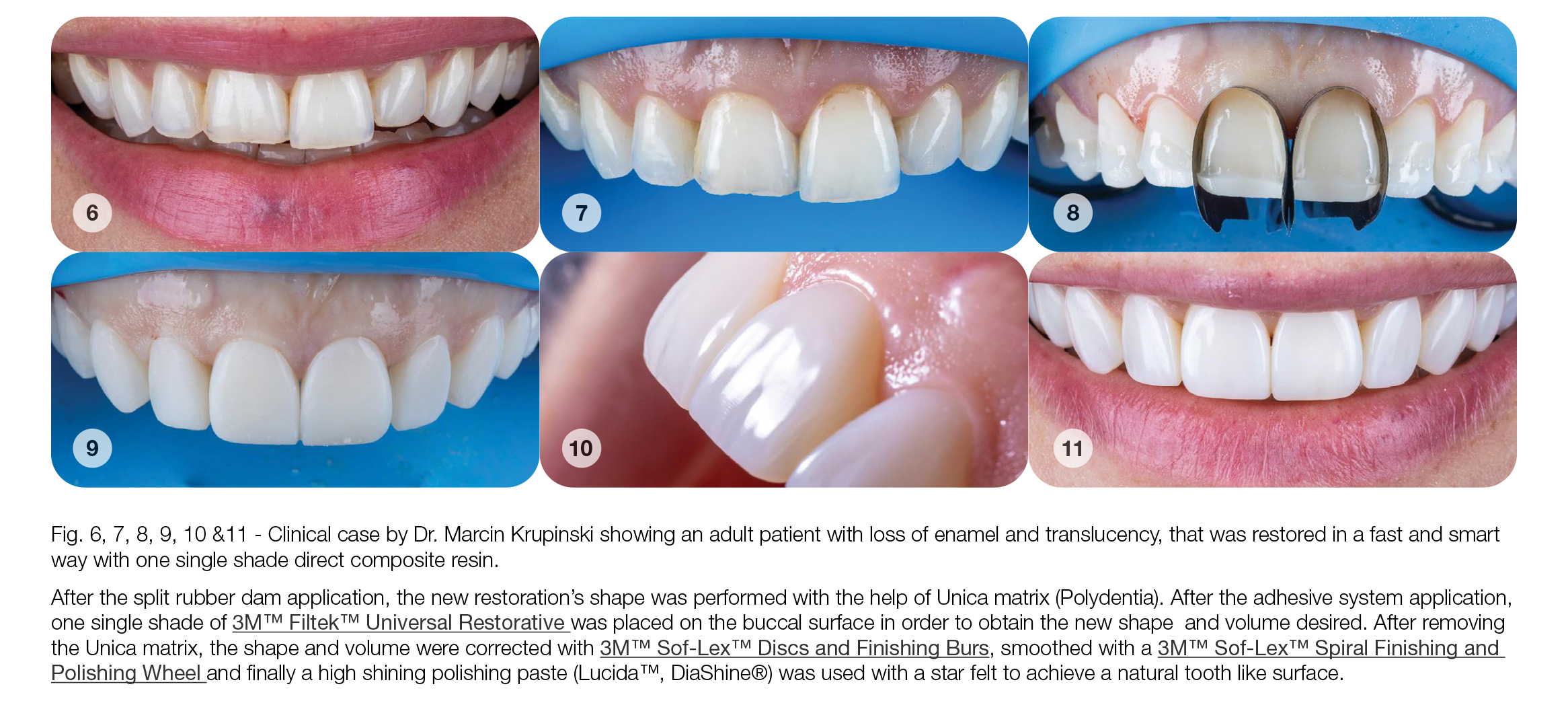
The Filtek Easy Match composite resin introduces an innovative single-shade system, designed to simplify the restorative process while maintaining exceptional aesthetic results. This system features intuitive colour selection and a remarkable chameleon effect, allowing it to blend seamlessly with multiple shades from the Vita Classical shade tab. By leveraging this shade-matching technology, the resin adapts to the natural tooth colour, covering a wide range of hues with just one material, reducing the need for multiple shades and simplifying inventory management. The ability of Filtek Easy Match to mimic surrounding tooth structures enhances both the efficiency and quality of anterior and posterior restorations, offering a user-friendly and aesthetically superior option for dental professionals.
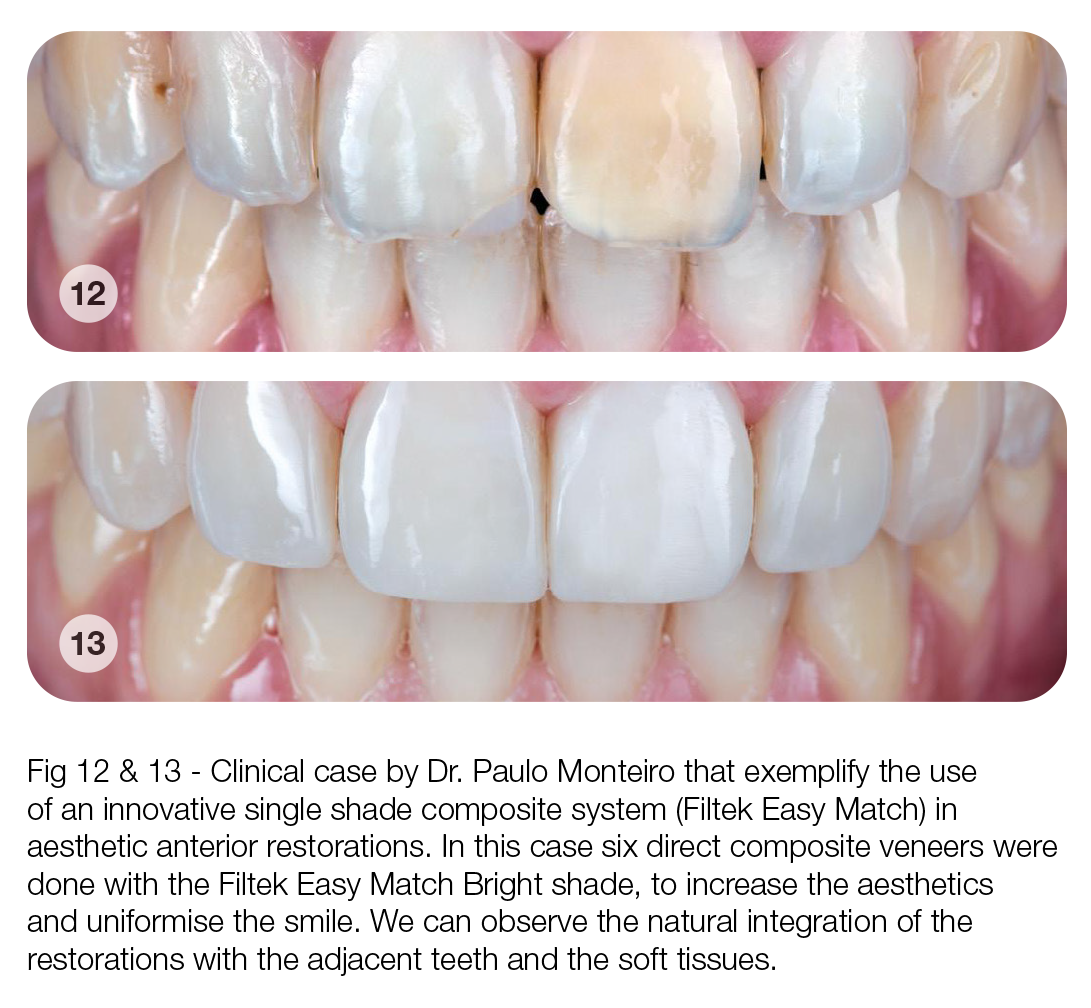
Conclusion
In the realm of restorative dentistry, the judicious selection of composite shades is a multifaceted decision influenced by various factors, including case complexity, patient preferences, and material advancements. Choosing the appropriate composite shade is a critical aspect of restorative dentistry that significantly influences the final aesthetic outcome. By understanding the indications for single shade versus multi/dual composite shades and considering important clinical considerations, dentists can consistently achieve superior aesthetic results for their patients. With careful planning and execution, composite restorations can seamlessly blend with natural dentition, restoring both function and beauty to the smile.
References
• Manauta J, Salat A. Layers: An Atlas of Composite Resin Stratification. Quintessence Publishing Co, 2012.
• Devoto W, Saracinelli M, Manauta J. Composite in everyday practice: How to choose the right material and simplify application techniques in the anterior teeth. Eur J Esthet Dent. 2010;5(1):102-124.
• Putignano A, Milledue M, Mangani F, Franceschini G, Cerutti A. Aesthetic restoration of non-carious cervical lesions: A 5-year clinical evaluation. Oper Dent. 2016;41(5):511-518.
• Drummond JL, Bapna MS, Static V, Steinberg AD. An atlas of composite restorative materials. Dent Clin North Am. 2007;51(2):359-394.
• Heintze SD, Rousson V. Clinical effectiveness of direct anterior restorations - a meta-analysis. Dent Mater. 2015;31(5):481-495.
• Ferracane JL. Resin composite--state of the art. Dent Mater. 2011;27(1):29-38.
• da Cunha LF, Pedroche LO, Gonzalez AH, Furuse AY. Resin-based composites in dentistry: the monomer systems. Eur J Dent. 2019;13(2):317-323.
• Yılmaz E, Tüfekçi E, Tuncer D, Gümüstas B, Bayrak S. Evaluation of different shade matching instruments and effect of disinfection on shade matching. Acta Odontol Scand. 2013;71(3-4):947-953.
• Hassel AJ, Johansen E, Joergensen KD, Heterogeneity in color stability and polymerization of light-cured resin composites. Acta Odontol Scand. 2015;73(7):532-538.
• Bora PA, Sharda N, Daing A, Snehil M. Aesthetic restorative materials: a review of existing and newer materials. J Dent Res Rev. 2016;3(2):52-58.